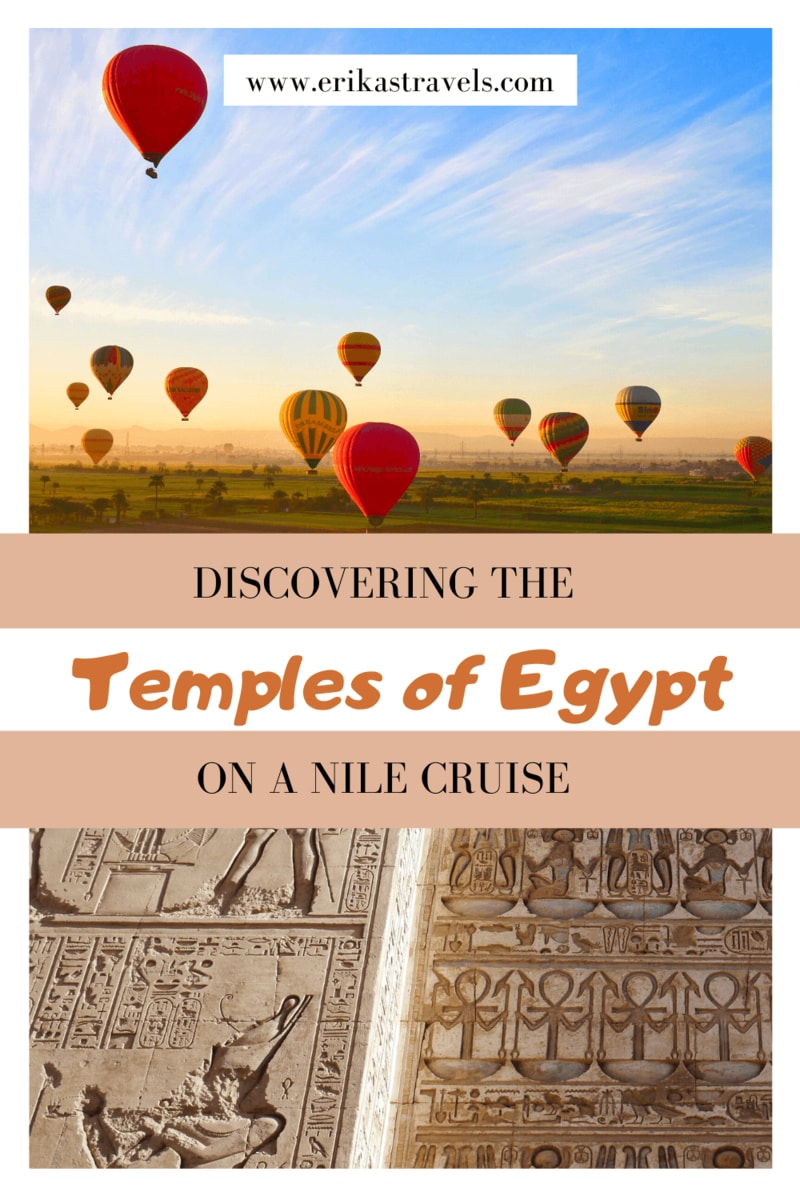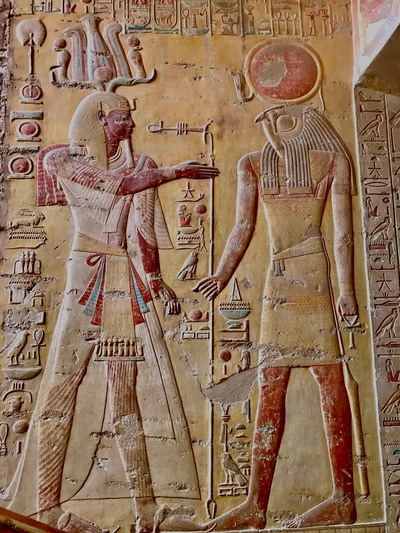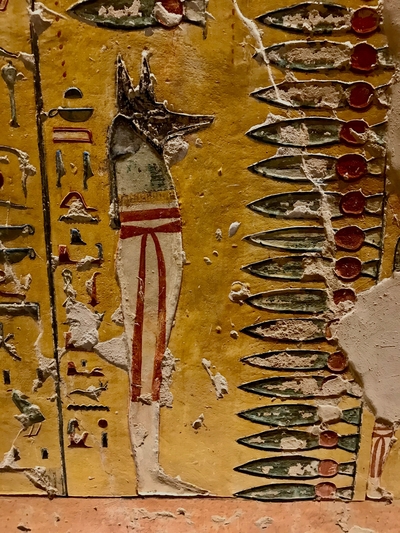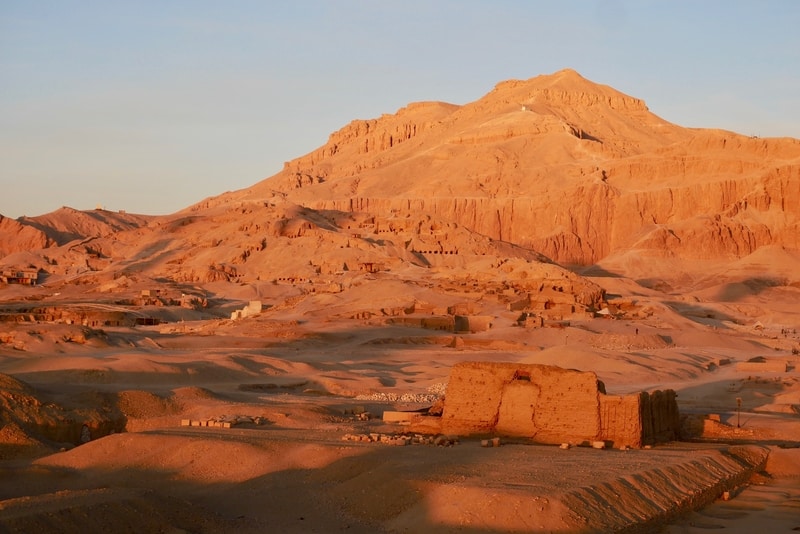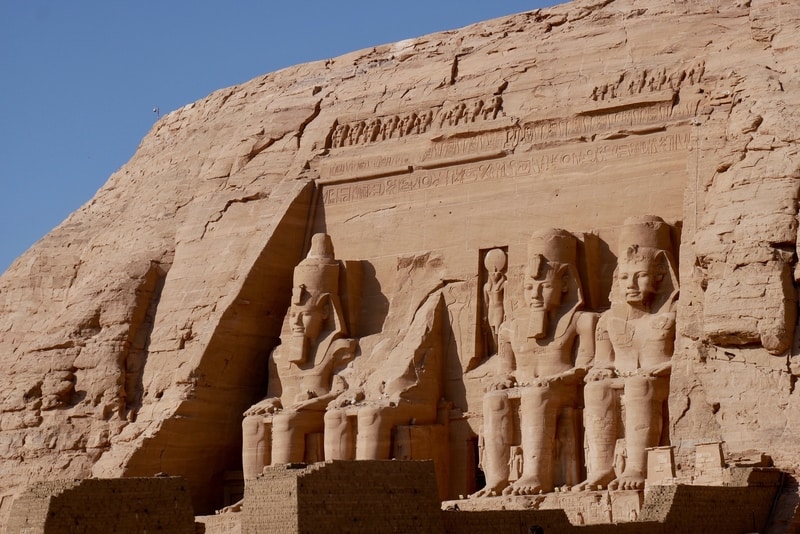
Visiting the Temples of Egypt on a Nile Cruise
The Nile River is the blood that flows through Egypt’s veins. Over the course of 5,000 years, it has sustained civilizations and allowed them to flourish in an otherwise inhospitable land. Without the waters of the Nile, Ancient Egypt would have never existed. And consequently, it is thanks to this great river that today’s world has things like paper, makeup, writing and irrigation.
The banks of the Nile in Upper Egypt (geographically the lower part of the country) lay claim to one of the world’s largest open air museums. Boasting ancient tombs adorned in colorful reliefs and temples preserved for millennia beneath layers of desert sand, the Nile River Valley is a place of unparalleled historical wealth and unrivaled cultural significance.
NILE CRUISE FROM LUXOR TO ASWAN
In order to best explore the sites along the Nile, Dan and I booked a four day tour with Dahab Hostel in downtown Cairo. The tour package consisted of a three day Nile cruise and one night in a Luxor hotel. The cruise itinerary included a comfortable cabin, three meals per day, transport and guides. For $350 per person, we felt as though we were getting a great deal. And what’s more, the tour included a free hot air balloon ride in Luxor and a free day trip to the Saqqara and Dashur Pyramids near Cairo.

Yet, while we found the package deal to be cheaper than other Luxor-Aswan cruise options, we soon learned why. From start to finish, the Nile cruise was a comedy of errors that left us guessing, frustrated, and downright confused.
When we booked our Nile cruise, we did not know the company we would be traveling with, or any details pertaining to our itinerary. We merely jumped at the opportunity to book a tour with Dahab Hostel, since we couldn’t refuse the advertised price.
It became immediately apparent, however, that the tour would consist of a series of moving parts that each work independently of one another. Each step of the way, we were told what our next activity would be: nothing more, nothing less. None of the drivers or guides could answer our itinerary-related questions, nor did they know any of the tour logistics outside of their immediate responsibilities. At one point, we even woke up unnecessarily for a 5am hot air balloon ride that never materialized. After waiting in the hotel lobby for nearly two hours, we found out that it was actually scheduled for the following day.
I have no way of knowing if our experience was an anomaly, or if all Egypt cruise packages require a test of patience. I’m fully aware that we visited during a particularly busy week of the year, and that slower months may offer visitors a more relaxed travel experience.
There are dozens of different cruise lines that travel between Luxor and Aswan. They might all have slightly different aesthetics and cater to varying budgets, but they all follow the same itinerary, as if part of a caravan.
OUR NILE CRUISE ITINERARY
From Cairo, our Nile Valley tour included an overnight train to Luxor. There, Dan and I spent the night at a hotel and had the liberty of exploring the city’s sites on our own, before the start of our cruise to Aswan.
Following visits to both the East Bank and West Bank of Luxor, we boarded the Chateau Lafayette and sailed to Aswan. Along the way, we stopped at the temples of Edfu and Kom Ombo.
And finally, on the day we were scheduled to return to Cairo by overnight train, we squeezed in visits to Abu Simbel (nearly 6 hours away round trip), the Philae Temple, and the Aswan High Dam.
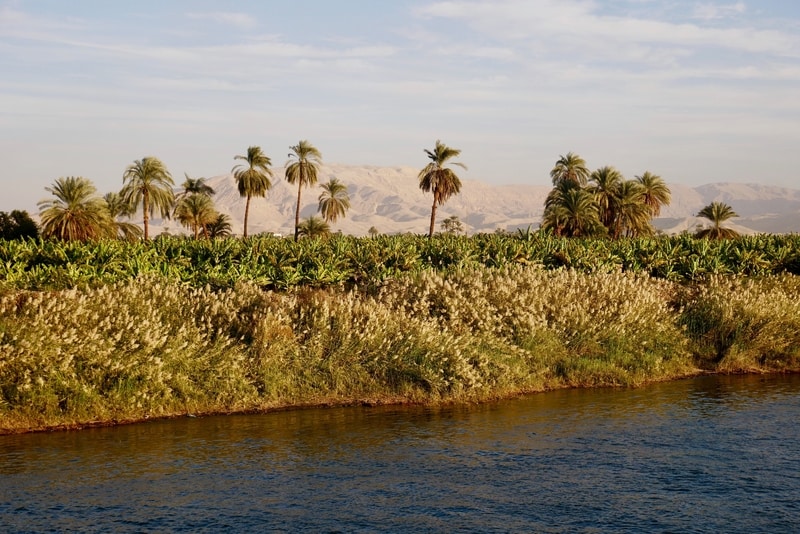
It was a whirlwind itinerary that consisted of boatloads of confusion (literally), awkward New Year’s Eve dance parties, and visits to Egypt’s most impressive and beautiful temples.
ANCIENT EGYPTIAN TEMPLES ALONG THE NILE
The temples of Egypt are a string of superb UNESCO-recognized wonders that lie scattered along the banks of the Nile. The fertile plains boast an embarrassment of riches that extend from the Mediterranean Sea, to the deserts of Sudan.
Within the span of three days, we crammed in as many temples as we could, stuffed our brains with as much new information as possible (thanks to the History of Egypt Podcast on Spotify), and left knowing a whole lot more about the mysterious and magical world of Ancient Egypt.
THE TEMPLE’S OF LUXOR’S EAST BANK
Luxor is one of the world’s greatest open air museums, and the heart of Upper Egypt. The city—known as Thebes in ancient times—boasts some of the oldest and best preserved monuments of the ancient world.
The undeniable highlights of Luxor’s East Bank are the outstanding twin temples of Luxor and Karnak.
-
THE KARNAK TEMPLE
The Karnak Temple is an extraordinary complex of sanctuaries, pylons and obelisks dedicated to the Theban Triad (the Egyptian god Amun, his wife Mut, and their son, Khonsu). The temple is huge; large enough to contain ten cathedrals.
Barring the Pyramids of Giza, it is the most awe-inspiring of Egypt’s ancient wonders.
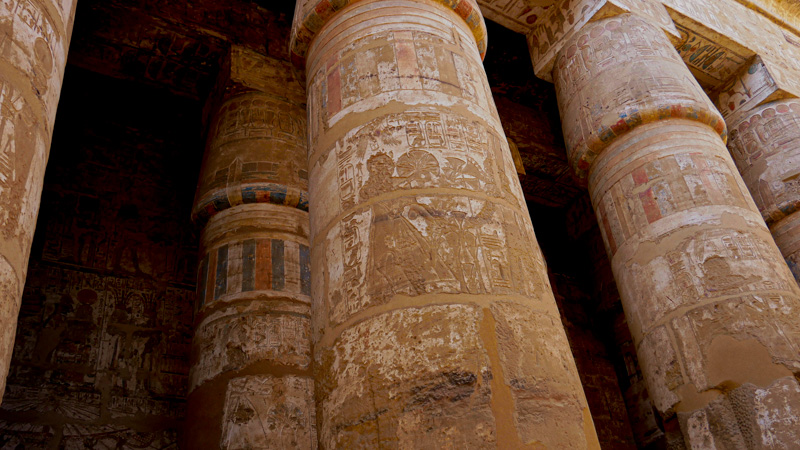
The Great temple of Amun is the pinnacle of Egyptian architectural relics. At its heart, lies the Hypostyle Hall—a 6,000 square meter room that contains a forest of decorated colonnades.
Our Nile River cruise itinerary allocated only an hour’s visit to Karnak. However, thank’s to a scheduling snafu that gave us an extra day in Luxor, we took an entire afternoon to explore the site on our own. Armed with a dated Bradt Guide and a solid pair of walking shoes, we spent four hours admiring the temple’s hieroglyphs, reading about its significance, and exploring its smaller rooms and ceremonial complexes.
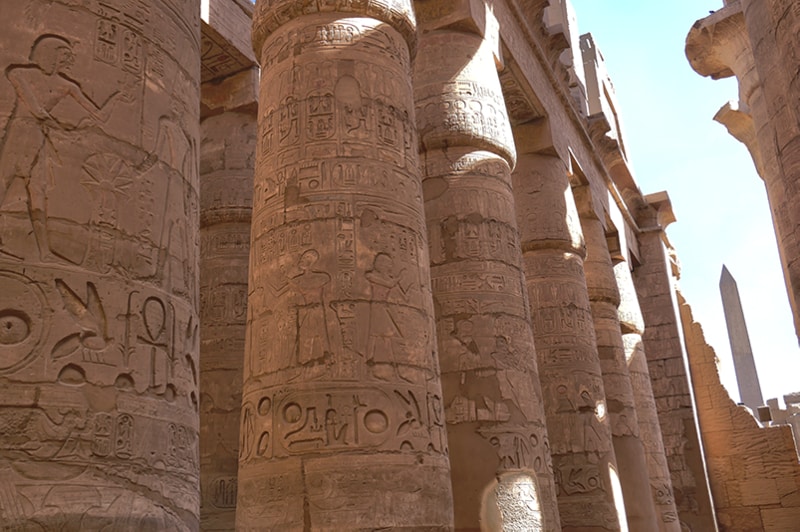
Visiting Karnak on our own gave us the freedom to explore the lesser-known areas of the archeological site. We admired the Temple of Khonsu, found a wall containing the world’s first documented peace treaty, and gazed out over the Avenue of the Sphinxes.
Then, after meticulously studying the temple from top to bottom and side to side, we met up with our guide and headed to the Luxor Temple.
-
THE LUXOR TEMPLE
The Luxor Temple sits at the heart of modern-day Luxor. New Kingdom pharaohs, Amenhotep III and Ramses II, built the temple for ceremonial purposes. During the annual Opet celebrations, statues of the Theban Triad were brought from Karnak to Luxor in a procession of barques, along the Avenue of Sphinxes.
In the centuries following the decline of Ancient Egypt, sand and silt buried Luxor’s magnificent temple and aided in the preservation of its stunning reliefs. Atop the temple, subsequent generations built a bustling town complete with mud-brick houses and shops. In the 14th century, residents of Luxor constructed a mosque atop the buried temple.
When archeologists began excavating the Luxor Temple in 1885, they cleared away the surrounding village structures and relocated much of the city’s population.
The mosque, however, still remains.
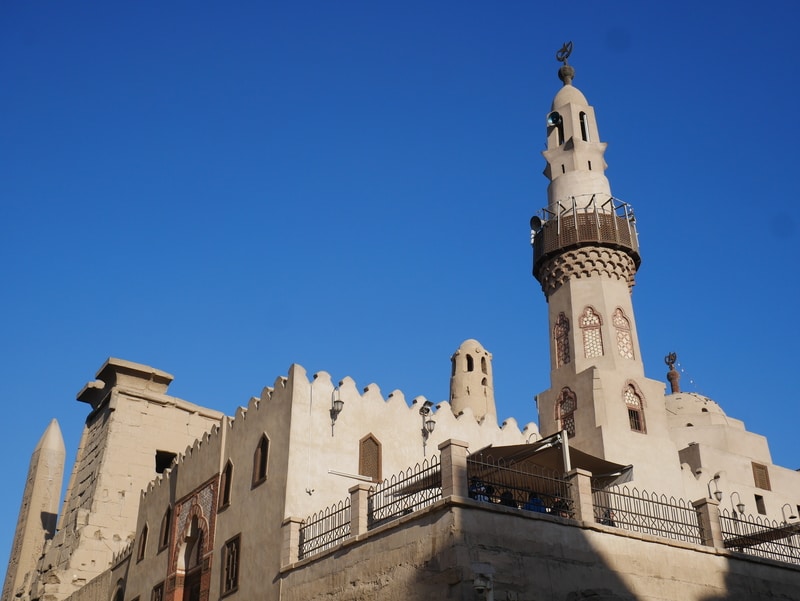
The Temple of Luxor illustrates Egypt’s historical legacies. Toward the back of the temple, an antechamber reveals walls that the Romans plastered over and converted into a Christian chapel.
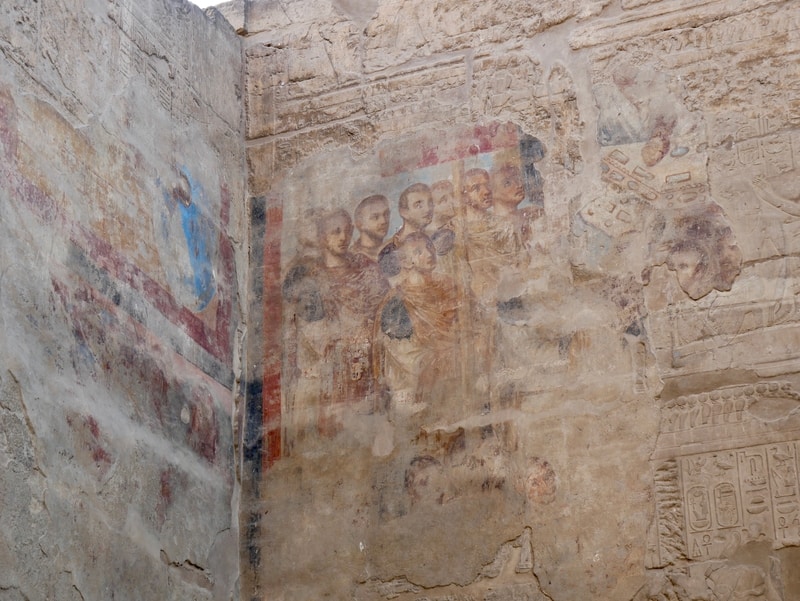
The chapel’s colorful depictions are still visible today.
THE THEBAN NECROPOLIS ON LUXOR’S WEST BANK
The two sides of Luxor represent the duality of life and death in Ancient Egypt. While the East Bank of Luxor (where the sun rises) is associated with rituals pertaining to life, the Nile’s West Bank (where the sun sets) contains themes associated with death. The arid and colorless desert of Luxor’s West bank contains some of Egypt’s most outstanding temples and mortuary complexes.
The temples and tombs strewn about Luxor’s West Bank were built with the intention of honoring the eternal rule of Egypt’s pharaohs. Their tombs are some of the most lavish and ornate in history—embossed in colorful reliefs that depict the passage to the afterlife.
-
THE COLOSSI OF MEMNON
We began our guided tour of the West Bank with a brief visit to the Colossi of Memnon. The two reassembled statues rise majestically above the fertile plains of the Nile River Valley, as if guarding the tombs of the Theban Necropolis. Soaring 18 meters in the air, they are the first monuments that welcome visitors to Luxor’s West Bank.
The twin colossi weigh about 1,000 tons each. Originally carved out of solid blocks of rock, they tower over the funerary temple of Amenophis III.
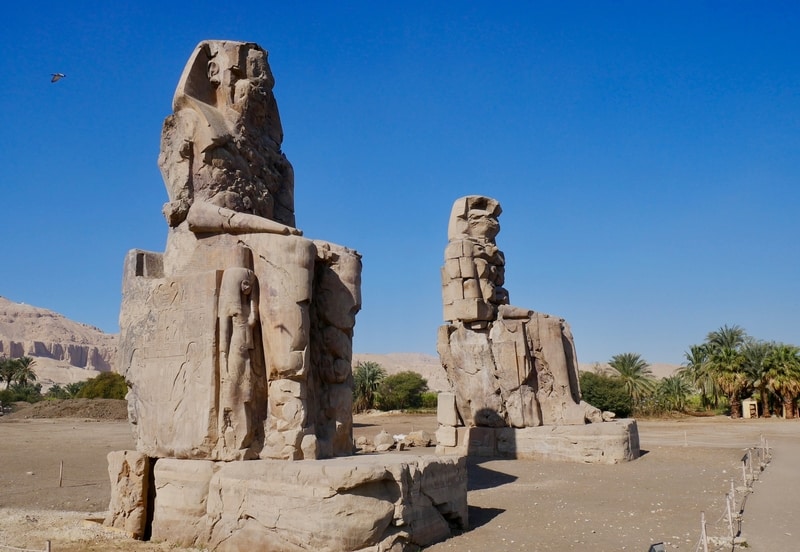
Today, the Temple of Amenophis III lies largely in disrepair. At the time of our visit, however, excavations in the area were ongoing.
-
THE TEMPLE OF HATSHEPSUT
Our tour to Luxor’s West Bank included a brief half hour visit to the modern-looking Temple of Hatshepsut. The temple lies against an escarpment of rugged rock and blends into its surroundings as if part of the natural landscape.
The mortuary Temple of Queen Hatshepsut—known alternatively as Deir el Bahri—is set amidst a natural amphitheater in the Theban Hills. With its angular colonnades and three layered terraces, the temple has a modern and minimalist aesthetic that sets it apart from the other temples of the Nile Valley.
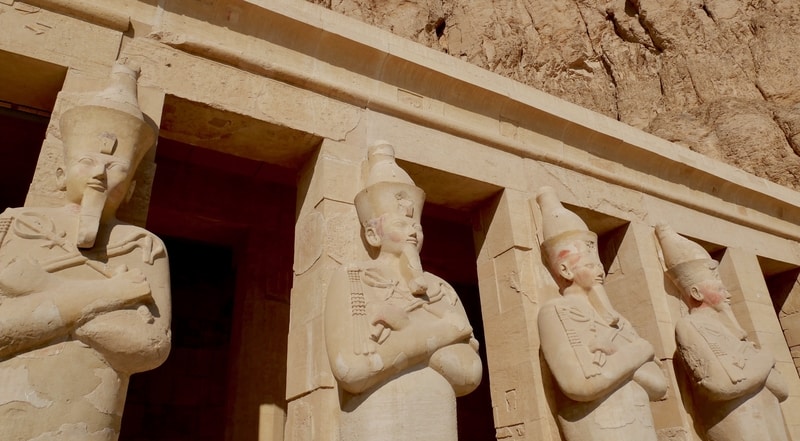
In comparison to some of the other better preserved temples, Deir el Bahri’s reliefs are difficult to decipher. However, we particularly enjoyed the temple’s colorful depictions of jackal-headed Anubis (protector of the dead) and its chapel to the cow-headed goddess Hathor.
-
THE VALLEY OF THE KINGS
After a whirlwind visit to the Temple of Hatshepsut, our tour brought us to the infamous Valley of the Kings—an area of tombs spread out over the bone-dry Theban Hills. Beyond the fertile plains of the Nile Valley, these barren and arid hills bely the magic that lies hidden underground.
The Tombs of the Kings were built to immortalize the Egyptian pharaohs. Each tomb consists of narrow passageways adorned in stunning reliefs. Upon their discovery, the tombs contained sarcophagi of the pharaohs. Today, however, most of the royal mummies and sarcophagi reside in museums elsewhere.
Over the millennia, tomb robbers, floods and mass tourism (dating back to Greek and Roman times) have wreaked havoc on the ancient necropolis.
Yet still, the depictions within the tombs remain visually striking.
Our entrance ticket to the archeological site included admission to three of the site’s 63 royal tombs. Our guide chose the tomb of Rameses IV, the tomb of Ramses IX and the tomb of Merenptah.
Due to lack of time, we skipped the Tomb of Tutankhamun. Visitors hoping to enter the burial chamber of one of Ancient Egypt’s most renowned young pharaohs, can purchase an additional ticket for 200LE. The relics discovered in Tutankhamun’s tomb, however, are on display in Cairo’s Museum of Antiquities.
HOT AIR BALLOON OVER THE VALLEY OF THE KINGS
Our Nile cruise included a hot air balloon ride over the Valley of the Kings in Luxor. Since I passed up on the opportunity to fly in a balloon over the ruins of Bagan in Myanmar, the activity was one of the most anticipated moments of our tour. It did not disappoint.
Hot air balloon tours are a popular way of exploring the Valley of the Kings in Luxor. With tours costing as low as $60 per person, the Valley of the Kings is one of the cheapest places in the world to experience balloon rides.
Soaring above the Valley of the Kings provided us with an alternative perspective of the archeological site and its surroundings.
From up in the air, spectacular birds-eye-views of the arid mountainside and fertile Nile Valley unfolded before our eyes. Our elevated vantage point allowed us to see the abrupt transition between verdant fields of sugarcane and the orangey-hued desert. We could even spot the West Bank’s temples and tombs amidst the massifs of barren rock.
It was magical, surreal and serene. So antithetical to Egypt’s omnipresent chaos and confusion.
TEMPLES TO VISIT BETWEEN LUXOR AND ASWAN
After our hot air balloon adventure, we left Luxor and and began our journey up the Nile. As we cruised along the river, we spent time watching life unfold from our boat’s rooftop deck. Up and down the length of the river, we could see the fertile green plains fade into parched orange earth. We watched farmers bringing their donkeys to the water’s edge, and fishermen sail by on makeshift wooden boats.
On the following day—en route from Luxor to Aswan—we had the opportunity to stop by the temples of Edfu and Kom Ombo.
-
EDFU TEMPLE
While each of our cruise stops along the Nile was rushed and disorganized, nowhere did this ring more true than at the great Temple of Edfu.
Though Edfu is one of the most beautiful temples in Egypt, our Nile tour did not do it justice in the slightest. A complete lack of organization, coupled with throngs of fellow tourists, made our visit so rushed that we had difficulty registering the beauty of our surroundings.
Picture this: five thousand people being funneled toward the temple on horse-drawn carriages, at the exact same time. The chaos was extraordinary, even for Egyptian standards.
Had we not traveled along the Nile precisely for the opportunity of visiting these Egyptian temples, we would have opted to turn back and wait in the boat alongside some of our fellow cruisers.
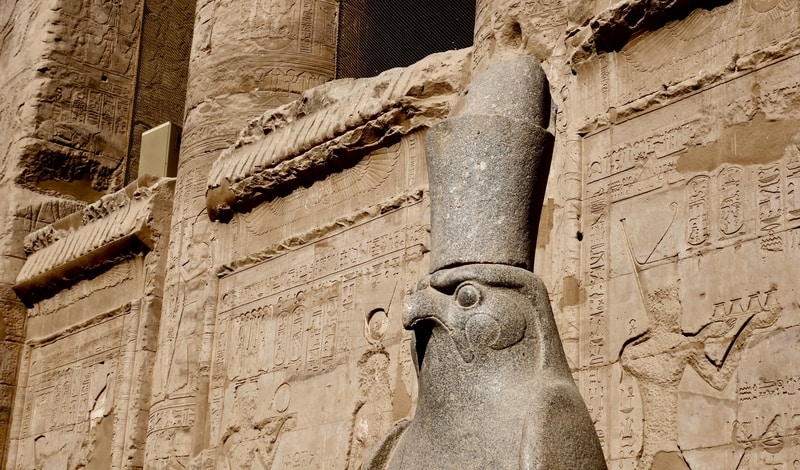
By the time we got to the Edfu Temple, we only had half an hour to explore.
But the Great Horus Temple at Edfu is not the type of place that can be toured in merely 30 minutes. The Ptolemaic temple, built between 237 and 57 BC, is one of the best-preserved ancient monuments in Egypt.
The Edfu Temple owes its remarkable preservation to the desert sands that kept it hidden from the elements until the 1860s. Reliefs and inscriptions in the temple walls include allusions to the struggle between falcon-headed Horus and his brother, Seth.
-
KOM OMBO TEMPLE
After a whirlwind tour of the Edfu Temple, we returned to our boat and set sail toward Kom Ombo. The transport-related confusion in Edfu delayed the remainder of our itinerary and caused us to arrive at Kom Ombo around sunset.
Kom Ombo overlooks the placid Nile waters. One of the most beautifully-situated temples in Egypt, it stands on a promontory at a bend in the Nile—at a place where sacred crocodiles once basked in the sun.
Luckily, our visit to Kom Ombo proved to be more relaxed. Since Kom Ombo lies along the banks of the Nile, we did not have to figure out transport. In addition, we had fewer crowds to contend with since many passengers opted to skip Kom Ombo after the epic kerfuffle at Edfu.
Though Kom Ombo is smaller than some of the other Nile Valley temples, it is unique for its dedication to two gods: the local crocodile god Sobek (god of fertility), and Haroeris (Horus the Elder).
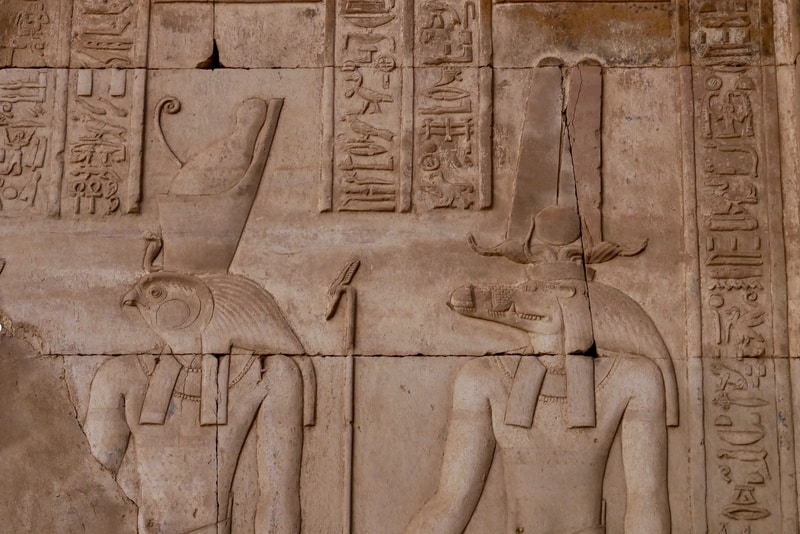
A small crocodile museum lies adjacent to the temple. Visits to the museum are included in the Kom Ombo entrance ticket and feature mummified crocodiles of various sizes.
Photography of the crocodiles in the museum is not permitted.
ANCIENT EGYPTIAN TEMPLES IN ASWAN AND ABU SIMBEL
The final day of our Nile cruise was a whirlwind from start to finish. Seeing all the temples near Aswan within a few short daylight hours was a bit like trying to run a marathon in an elevator. In retrospect, I wonder how we ever thought it would be possible to fit so many activities within a single day.
Still, everything seemed to work out in the end. The final day of our Nile cruise consisted of a 4am wakeup, followed by six hours on the bus round trip from Aswan to Abu Simbel. After returning to Aswan and before our overnight train back to Cairo, it included brief visits to the Philae Temple and Aswan High Dam.
-
ABU SIMBEL TEMPLE
Abu Simbel is the southernmost temple in Egypt. It lies along the shores of Lake Nasser, only 40km from the Sudanese border. Aside from being extraordinary in its aesthetics, the temple is a modern marvel of engineering.
Carved out of the mountainside between 1274 and 1244 BC, Abu Simbel’s imposing main temple showcases the self-worshipping tendencies of Ramses II—Egypt’s most narcissistic pharaoh. In order to impress his power on the Nubians to the south, Ramses carved four colossal statues of himself into the mountainside. In the temple’s decor, the deified pharaoh physically overshadows the sun-god Re-Herakte, to whom Abu Simbel is nominally dedicated.
A smaller Hathor Temple lies just a stone’s throw away from the main ceremonial complex. The temple—dedicated to Queen Nefertari—is likewise hewn into the surrounding rock. Its exterior contains buttresses of Ramses II and his favorite wife.

In the 1960s, construction of the Aswan High Dam threatened to bury Abu Simbel under Lake Nasser’s reservoir. The prospect of losing the remarkable temple spearheaded a UNESCO-funded campaign to salvage Nubian monuments in Lake Nasser’s vicinity. In a feat of engineering that is almost as impressive as the construction of the temple itself, the campaign resulted in a complete relocation of the temple, piece by piece.
-
THE ASWAN HIGH DAM
Upon returning to Aswan from Abu Simbel, our tour took us to visit the Aswan High Dam. While I wish our itinerary would have omitted a visit to the dam in lieu of dedicating more time to the Philae Temple, the engineering project is of undeniable significance and one of the most impressive facts about Egypt in modern times.
In the 1950s, Egyptian leader Gamal Abdel Nasser envisioned building a dam that would bring electric power to every corner of Egypt. It was a massive undertaking that remains one of the largest engineering projects of the 20th century.
The construction of the dam and subsequent formation of Lake Nasser required the resettlement of 90,000 Egyptian peasants and Sudanese Nubian nomads, as well as the costly relocation of the Abu Simbel and Philae Temples.
-
PHILAE TEMPLE
The Philae Temple is the most prominent archeological site in Aswan. Though the temple dates to the end of the New Kingdom, Ptolomaic and Roman rulers constructed the majority of temple over the course of nearly 800 years. Thus, the archeological site is a harmonious fusion between ancient Egyptian and Greco-Roman architecture.
As with Abu Simbel, the encroaching waters of Lake Nasser compelled Egyptian authorities and UNESCO to relocate the Philae Temple to the shores of Aglika Island.
Today, the newly assembled temple sits majestically amidst volcanic outcrops, like a jewel on the River Nile. To reach it, we had to take a small boat from the site’s ticket office.
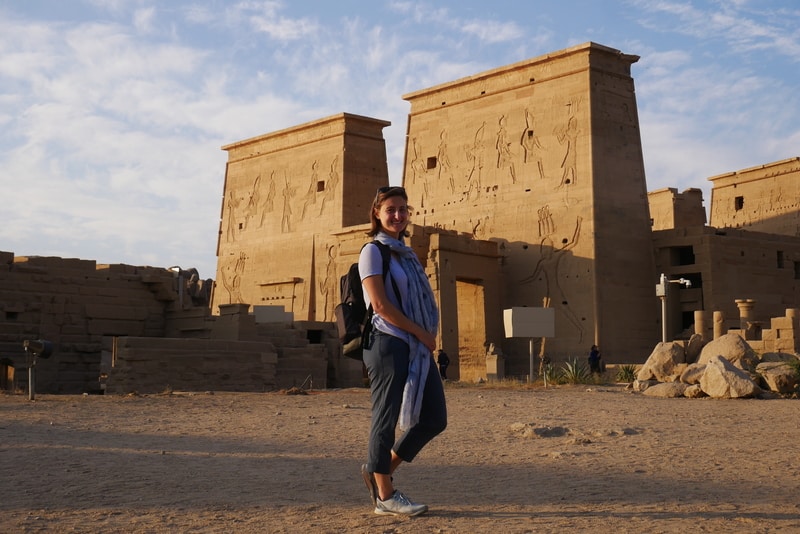
The Philae Temple’s twin towers and central doorway provide a grand entryway that is decorated with reliefs. Beyond, lies the Birth House of Ptolomy IV, the Hypostyle Hall, and the sanctuary of Isis.
Once we set foot on the small island, our tour guide gave us half an hour to explore.
As with the rest of the stops on our Nile cruise, it was not nearly enough time to discover the area.
****
While our Nile cruise did not give us the time we would have liked to adequately visit the temples of Egypt at our leisure, its favorable price was too good to pass up. It was so good, in fact, that Dan and I dismissed our own advice and booked a tour to the White Desert with Dahab Hostel immediately upon our return.
Cruising between Luxor and Aswan allowed Dan and I to enjoy the temples of the Nile without the hassle of having to book our own transportation and figure out logistics. It allowed us to sit back, relax, and watch life unfold along the Nile’s riverbanks.
Sure, I would have loved to explore the temples at my own pace. I would have loved to relish my surroundings without the crowds. I would have loved an itinerary that stayed true to what we booked.
Yet, though we were constantly kept in the dark, everything seemed to sort itself out in the end. And that is not too dissimilar to traveling Egypt as a whole, I suppose.
For no matter how frustrating and disorienting an experience, visiting the country is worthwhile in every sense of the word.
____________________________
Was this Nile Cruise Itinerary Helpful? Pin It!
